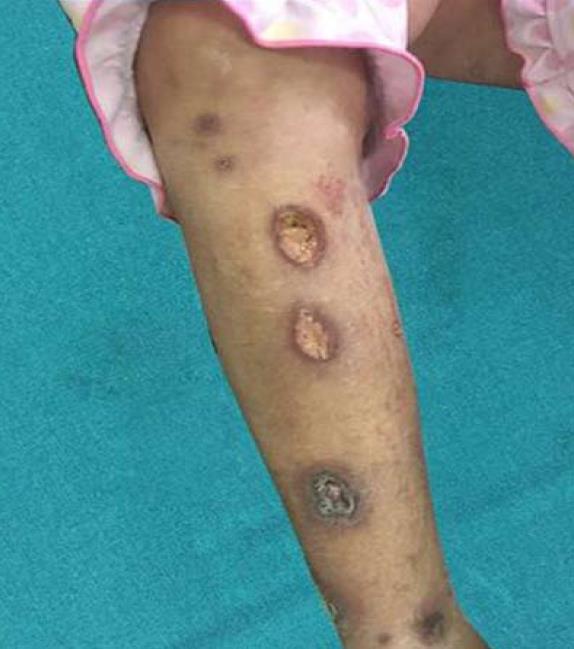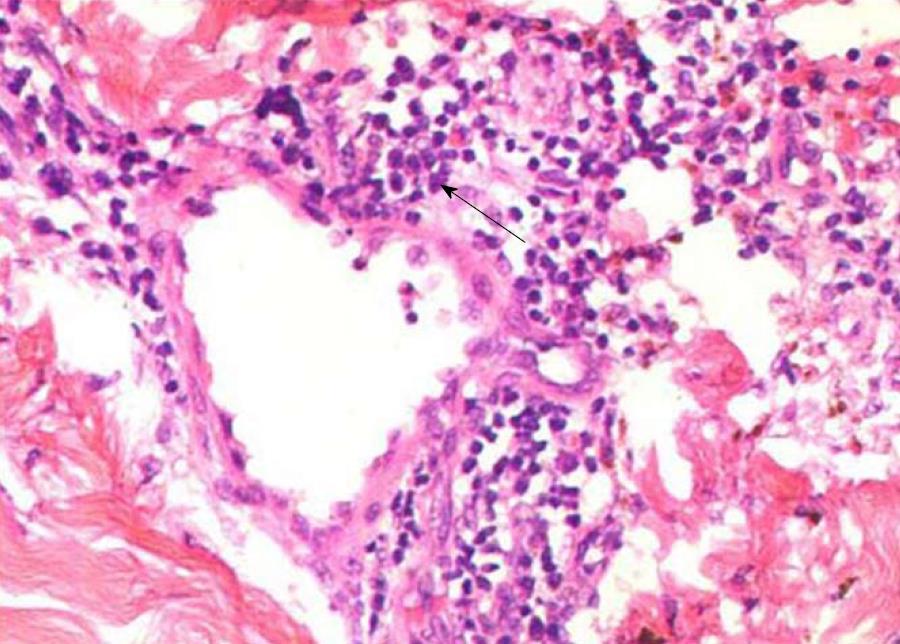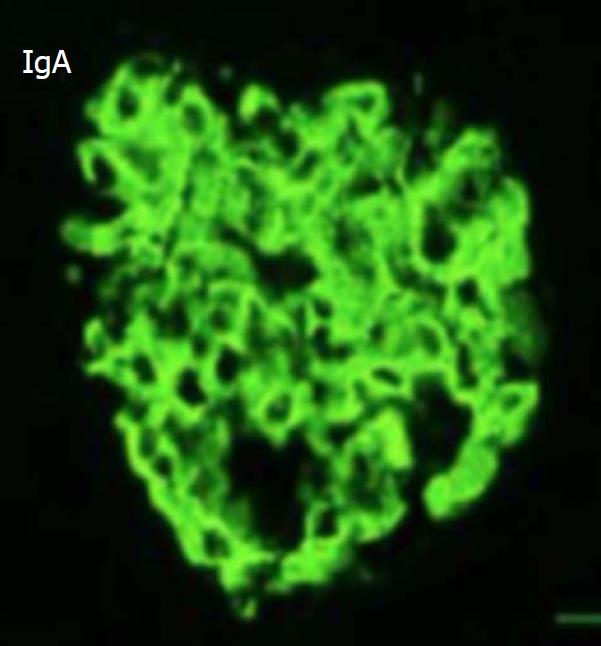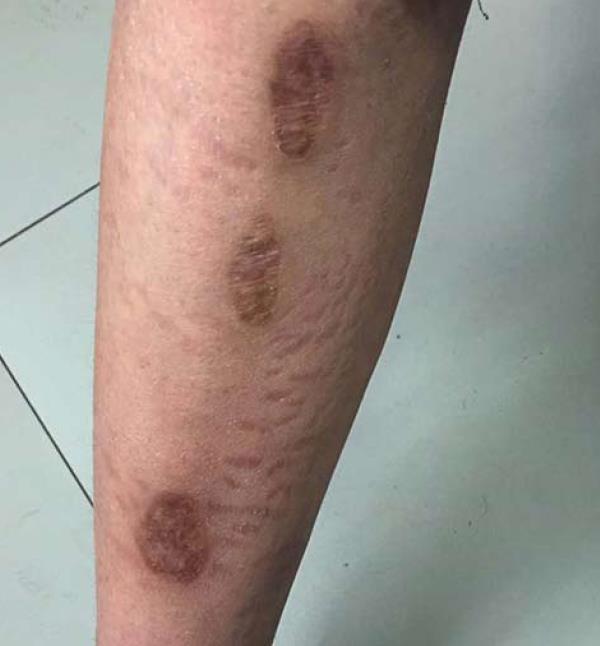Copyright
©The Author(s) 2018.
World J Clin Cases. Nov 6, 2018; 6(13): 703-706
Published online Nov 6, 2018. doi: 10.12998/wjcc.v6.i13.703
Published online Nov 6, 2018. doi: 10.12998/wjcc.v6.i13.703
Figure 1 The right lower leg exhibited ulcerated lesions with erythematous-violaceous excavated borders and a necrotic center.
Figure 2 Light microscopy of the primary skin lesion.
Massive small lymphocytes (black arrow) are arranged around blood vessels throughout the dermis [hematoxylin and eosin (HE) staining, × 200]
Figure 3 Light microscopy of the biopsied kidney tissue.
The mesangial area is moderately enlarged due to an increase in mesangial cells (black arrow) and the matrix. Endothelial cells (green arrow) show diffuse proliferation and degeneration. Infiltrated neutrophils (red arrow) are present [hematoxylin and eosin (HE) staining, × 200].
Figure 4 Immunofluorescence staining of the biopsied kidney tissues.
IgA showed strong positivity within the mesangium (× 200). IgA: Immunoglobulin A.
Figure 5 The skin lesions on the right lower leg were healed after one year, with only pigmentation remaining.
- Citation: Li XL, Ma ZG, Huang WH, Chai EQ, Hao YF. Successful treatment of pyoderma gangrenosum with concomitant immunoglobulin A nephropathy: A case report and review of literature. World J Clin Cases 2018; 6(13): 703-706
- URL: https://www.wjgnet.com/2307-8960/full/v6/i13/703.htm
- DOI: https://dx.doi.org/10.12998/wjcc.v6.i13.703













